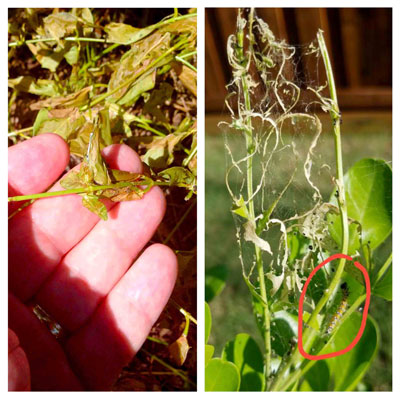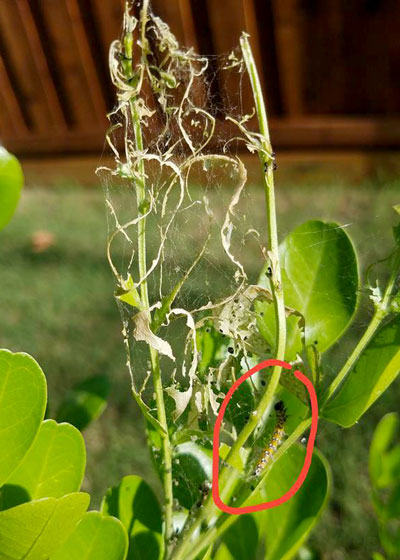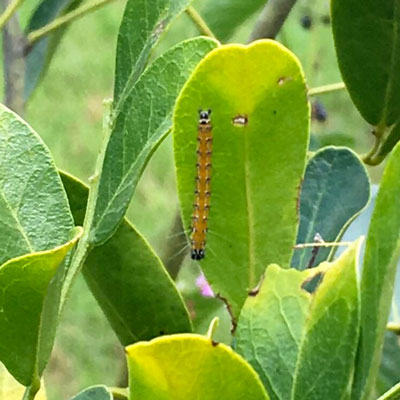Question of the Week Number 2: July 27, 2017
“Neil, something is eating the leaves on my plant. What can I do?”

Photo: Vinca leafrollers (L) and Genista caterpillars (R) are both devastating to foliage.
Start with identification…
Your first step in addressing an insect pest is to know what you’re fighting. If you don’t know the insect, at least know the plant. That will enable you to do a quick Web search to see what pests are likely to show up on that type of plant.

Photo: Vinca leafrollers tie leaves together to create protective cocoons.
Vinca leafrollers…
Trailing periwinkle (vinca) groundcover on the left is a longtime favorite shade groundcover in Texas landscapes. Our grandmothers’ grandmothers grew it. And every late July or August they watched vinca leafrollers move in and tie leaves together, creating their cocoons in the process. Meanwhile, all the leaves turn brown, and the planting ends up looking like a fire hazard until the fresh, new growth starts up in late fall.
Once leafrollers are as involved as they are in this McKinney landscape, there’s little you can do to make the bed look any better. I normally recommend trimming it off at a couple of inches. Sure it will look denuded, but that’s probably better than the way it looks right now.
Next year mark the calendar to apply a systemic insecticide to the soil somewhere in mid- or late June. You want to be several weeks ahead of the date when the pests normally move in. The insecticide will be taken into the leaves and it will be there to do its job when the pests start feeding.

Photo: Genista caterpillars devoured almost all of the leaf tissues of this Texas mountain laurel. Photo from FB friend Ben N.
Genista caterpillar…
If you grow Texas mountain laurel, there are high odds that you’ll encounter this pest. It shows up almost overnight, and within a day or two, it and its friends will strip the foliage off large portions of the plant.

Photo: Close-up of Genista caterpillar feeding on Texas mountain laurel leaf. Posted by FB friend Christi H.
In this case you learn to be vigilant. Watch every day or two for early signs of feeding. They frequently start in late May or early June – once the weather turns hot.
Control Genista caterpillars before they devour big bunches of foliage. Apply Bacillus thuringiensis (“B.t.”) biological worm control. It’s our most effective control for all types of caterpillars. If you don’t have B.t. on hand, but you do have another insecticide that is labeled for other types of caterpillars, it will probably work just as well.
